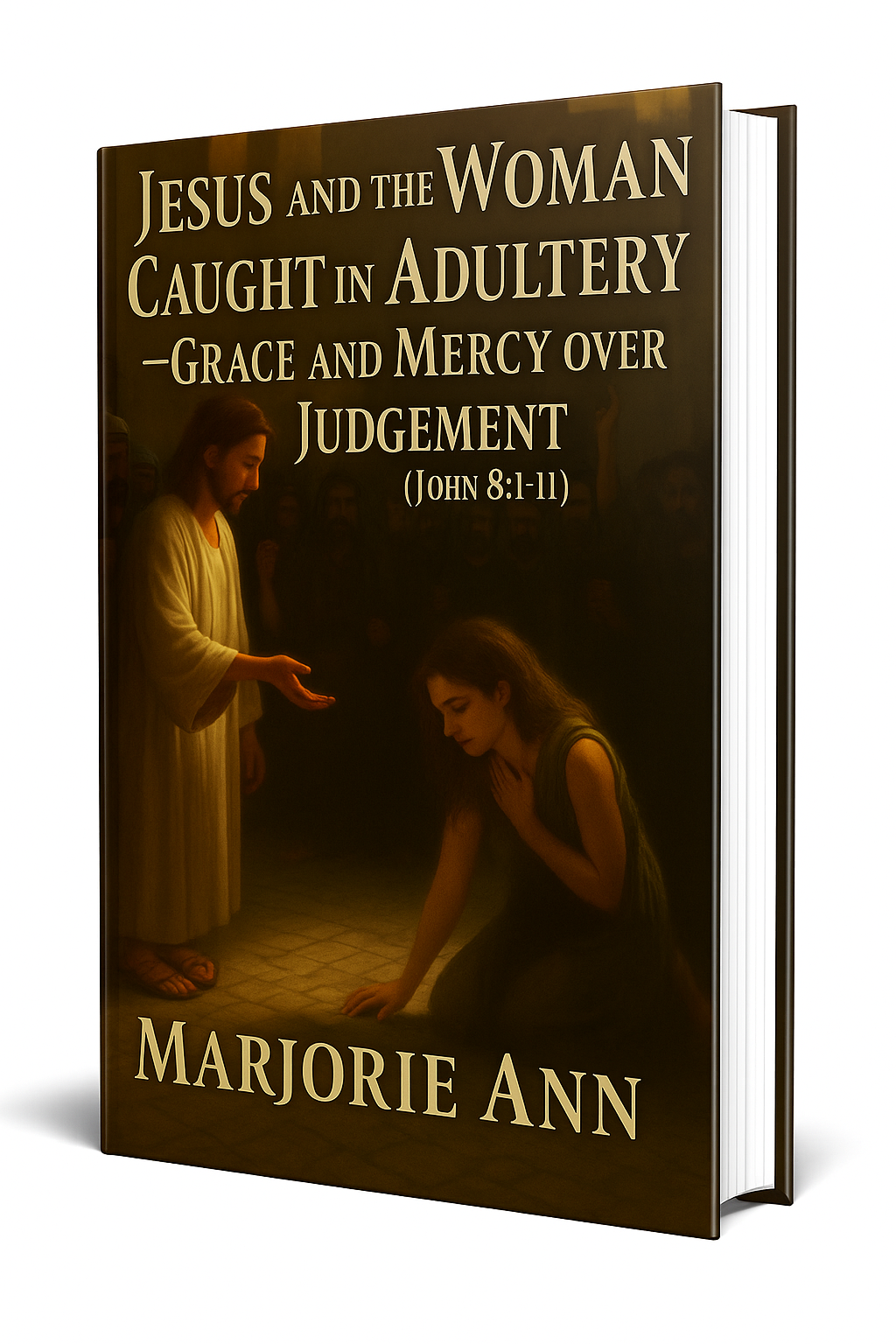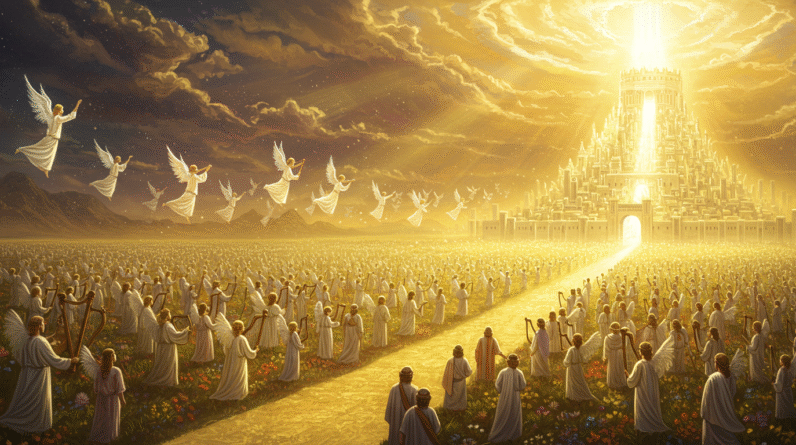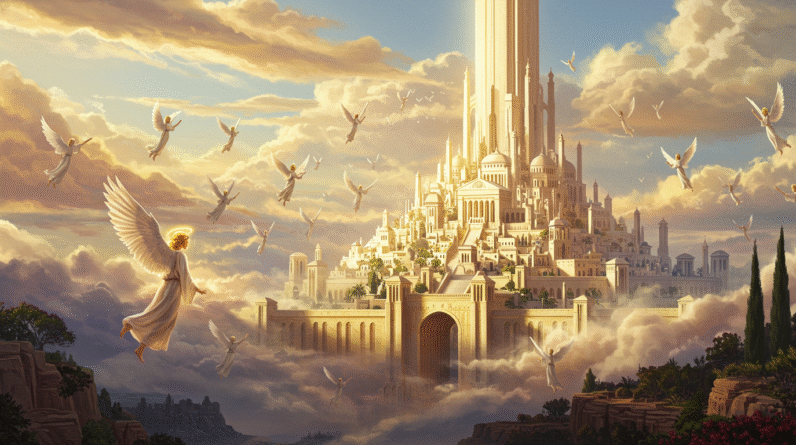Heaven And Earth United In God’s Kingdom
You’re drawn to big visions — the kind that give you hope when the daily grind feels like it’s swallowing you up. The Bible’s final picture of God’s kingdom is one of those visions: heaven and earth united, where God’s glory fills everything. When you explore that vision, you don’t just get future comfort; you get a map for how to live now. This article walks you through the biblical witness, theological meaning, pastoral implications, and practical ways you can live in light of the reality that heaven and earth united is God’s aim.
The Biblical Vision: Heaven and Earth United
The Bible ends with a stunning scene of consummation. John’s vision in Revelation presents a reality in which the boundary between heaven and earth is removed and God dwells fully with humanity. You can feel the culmination when you read Revelation 21:1–3: Revelation 21:1-3. That passage shows the sea gone, a new heaven and a new earth, and the intimate presence of God with His people — a portrait of heaven and earth united.
When you read these images, you’re invited into hope. The picture isn’t just about real estate — heaven vs. earth — but about God’s character coming to full expression. The concluding chapters of Scripture are not tentative; they announce the end of exile and the return of God’s presence.
Revelation’s Promise: A New Heaven and New Earth
You should notice the language of “new” in Revelation. The prophet paints a future that’s qualitatively different from what we now know: a new heaven and a new earth. That future isn’t a zone you escape to but an integrated reality in which God’s presence transforms everything. Read the promise again in Revelation 21:1–4 and let the implications sink in: sorrow and death are not final. Revelation 21:1-4.
That “newness” means restoration of creation’s goodness and the fulfillment of God’s purposes. You’re not imagining a dissociated celestial realm and a ruined earth. Instead, the vision insists that heaven and earth united means creation is healed and God’s reign is visible and tangible.
Old Testament Echoes: The Promise of New Creation
The New Testament vision finds its roots in the Old Testament. Prophets like Isaiah spoke of a transformed creation long before John’s Revelation. When you read Isaiah 65:17, you see the prophetic anticipation: “See, I will create new heavens and a new earth” — an early call toward heaven and earth united. Isaiah 65:17.
Isaiah’s language expands your understanding: this future is rooted in God’s faithfulness and creativity. It’s not a throwaway line but a repeated theme. Isaiah 66:22 also promises enduring continuity between creation and the Creator’s plan: “For as the new heavens and the new earth that I make will endure before me, declares the LORD, so will your offspring and your name endure.” Isaiah 66:22.
When you follow these prophetic threads, you recognize that heaven and earth united isn’t a novel idea contrived in the New Testament. It’s the culmination of a long biblical storyline about restoration, blessing, and God dwelling among His people.
The Work of Christ: Reconciliation of All Things
If heaven and earth united is God’s plan, Christ’s work is the means. Paul puts it bluntly: God was pleased to have all his fullness dwell in Christ and through him to reconcile all things to himself (whether things on earth or things in heaven). Read Colossians 1:19–20 and feel the scope: reconciliation that spans the cosmos. Colossians 1:19-20.
This cosmic reconciliation shows you that Jesus’ death and resurrection are not merely about individual souls. They address the entire order of reality. Ephesians speaks in similar terms when it describes God’s plan to bring unity “in the fullness of time” — to bring all things in heaven and on earth together under Christ (Ephesians 1:10). Ephesians 1:10.
When you hold these texts together, you see that heaven and earth united is grounded in the gospel. Your faith in Jesus connects you to God’s larger redemptive purpose for the cosmos.
Jesus Prays for Unity
If the aim is cosmic unity, Jesus models and prays for relational unity. In his high priestly prayer, he prays that believers may be one so that the world may believe — a unity reflecting the oneness between the Father and the Son. Read John 17:21–23 and notice how Jesus links unity among people with the revelation of God’s glory. John 17:21-23.
That prayer is significant because it connects your everyday relationships to the larger story of heaven and earth united. Your unity with other believers becomes a signpost pointing toward the ultimate union of God’s reign.

The Restoration of Creation: Creation’s Groaning and Hope
You likely notice the pain in the world: ecological collapse, natural disasters, famine, decay. Scripture recognizes creation’s suffering and its eager desire for redemption. Paul uses the image of creation groaning in Romans 8:19–22 to describe the longing for revealed freedom — not just human transformation, but the renewal of all created things. Romans 8:19-22.
That groaning isn’t evidence of divine neglect; instead, it testifies to the promise of the new creation. Your hope in the face of suffering isn’t naïve. It’s anchored in the conviction that heaven and earth united will eventually replace decay and death with flourishing and life.
The Prophet’s Picture of Flourishing
The Old Testament offers vivid imagery of restored creation, too. Ezekiel’s river of life that brings healing and abundant fruit pictures a future where the land is renewed and life springs up everywhere (Ezekiel 47:1–12). Ezekiel 47:1-12.
These images show that heaven and earth united have ecological dimensions: water of life, trees bearing healing, and permanent flourishing. God’s saving plan includes creation’s restoration, and your concern for the environment is part of faithful stewardship of the promised future.
The Kingdom Now and Not Yet
You live between two realities. On one side, the kingdom has already been inaugurated in Jesus’ life, death, and resurrection. On the other hand, the kingdom’s fullness is still coming. This “already and not yet” tension helps you read the Bible’s kingdom language. Jesus’ teaching — including the Lord’s Prayer’s plea “your kingdom come” — invites your active longing for the consummation when heaven and earth united becomes manifest (Matthew 6:10). Matthew 6:10.
Living in this tension means you work and hope simultaneously. Your prayers and actions anticipate the future reality even as you address present needs. The kingdom’s arrival has begun, but it hasn’t finalised all things yet.
How This Affects Your Daily Life
Because the kingdom is both present and future, your actions matter. Justice, mercy, reconciliation, and care for creation are kingdom work — glimpses of the coming reality. When you engage in these activities, you enact the in-breaking of the kingdom, pushing toward the moment when heaven and earth united will be fully realized.
Your everyday choices — how you treat others, steward resources, and work for peace — become pieces of the larger tapestry of God’s redemptive plan.
Worship and the Glory Filling All Things
A central motif in the consummation is divine glory filling everything. Habakkuk says it vividly: “For the earth will be filled with the knowledge of the glory of the LORD as the waters cover the sea” (Habakkuk 2:14). Habakkuk 2:14.
The New Testament echoes this cosmic dimension of God’s glory. Revelation describes a city where God’s presence replaces the need for a temple because God and the Lamb are its temple (Revelation 21:22). Revelation 21:22. That image signals an end to separation: heaven and earth united means the visible presence of God among people.
The Incarnation as Foretaste
You can also think of God’s presence in terms of the Incarnation. John’s opening claims that the Word became flesh and dwelt among us, and you see God’s glory in Jesus (John 1:14). John 1:14. The Incarnation is the first hint that heaven and earth aren’t forever separate. Jesus is the meeting point of heaven and earth — God taking up residence among us.
When you worship, you participate in this reality. Your songs, prayers, sacraments, and acts of devotion are small anticipations of the final worship where heaven and earth united is fully acknowledged.
Sacraments and Symbols: Signs of the Coming Union
The Christian sacraments point you to the consummation. Baptism symbolizes union with Christ’s death and resurrection and points to your participation in the new creation. Communion proclaims the Lord’s death until he comes, a reminder that the meal anticipates the final banquet when heaven and earth united will be fully realized (1 Corinthians 11:26). 1 Corinthians 11:26.
These signs matter because they shape you. Baptism and the Lord’s Supper are not mere rituals; they are living reminders that you belong to God’s unfolding story. By participating, you align your hopes and life with the promised union of heaven and earth.
Eschatological Questions: Timeline and Interpretations
You may have questions: Will there be a millennium? Is the restoration immediate or gradual? Scripture offers a range of images, and Christians have long debated details. The key isn’t settling every speculative point but embracing the certainty that God will make all things right. Revelation 21 provides the goal: a renewed creation where God dwells with His people, and that remains central no matter the interpretive camp you favor. Revelation 21:1-7.
The diversity of eschatological views invites humble conversation, not division. Whether you read the timeline as symbolic or chronological, the end promise — heaven and earth united — shapes your hope and action.
Living Between the Ages: Hope, Justice, and Creation Care
If heaven and earth united is God’s end goal, your ethics follow. Justice and care for creation are not optional. Psalm 72 envisions the king’s rule extending to the ends of the earth, blessing all nations (Psalm 72:19). Psalm 72:19. That concern for the planet and for the vulnerable belongs to God’s heart.
You live out this vision by advocating for the poor, working for peace, and protecting the environment. Your involvement isn’t trying to manufacture the end; it’s embodying what heaven and earth united will look like. In practical terms, that could mean community development projects, reducing your ecological footprint, or supporting public policies that reflect God’s justice.
Examples of Faithful Action
Faithful action can take many forms: local community service, advocacy for sustainable agriculture, support for fair economies, and participation in local congregations that care for their neighborhoods. Each act of compassion and stewardship demonstrates the reality that you believe heaven and earth united is worth working for now.
Pastoral Encouragement: Hope in the Midst of Suffering
You won’t find a naïve denial of suffering in Scripture. Instead, you find a hope that meets grief head-on. Revelation promises that God will wipe away tears, and there will be no more death or mourning (Revelation 21:4). Revelation 21:4.
Paul comforts with the thought that present sufferings are not worth comparing with the glory to be revealed (Romans 8:18). Romans 8:18. When you suffer, these texts do not erase pain, but they situate it within a promise: suffering is temporary; God’s final act will heal and restore.
Pastors and friends who speak this story into your life help you carry grief with the companion promise that heaven and earth united are coming. That hope encourages endurance and invites you to mourn without despair.
The Final Union: God’s Glory Filling All Things
Everything in Scripture orients toward God’s glory, filling creation. Ephesians speaks about the church as Christ’s body, “the fullness of him who fills everything in every way” (Ephesians 1:23). Ephesians 1:23. When you imagine heaven and earth united, imagine the comprehensive reality of God’s restorative presence.
That vision includes relational reconciliation, ecological renewal, societal justice, and spiritual worship. It’s not merely spiritualized piety; it’s a redeemed cosmos where every good thing is brought into alignment with God’s loving rule.
The Glory That Fills the Earth
Prophets didn’t hide the glory-theme either. Habakkuk’s image of the earth filled with the knowledge of God’s glory is a powerful summary of the end: God’s presence transforms understanding and life (Habakkuk 2:14). Habakkuk 2:14. Imagine a world where this knowledge is as pervasive and natural as the sea — that’s the portrait of heaven and earth united.
How You Participate: Prayer, Witness, and Service
So how do you take part in this grand story? It begins with prayer. You pray “your kingdom come” because prayer shapes your desires and aligns your will with God’s. Prayer is not a passive wish; it invites you into partnership.
Witness matters too. When you tell the story of Christ and live out love for others, you embody signs of the coming kingdom. Service concretizes hope. Feeding the hungry, visiting the imprisoned, caring for the sick — these acts are tangible moves toward the day when heaven and earth united will be visible to all.
Practices That Form You
Certain practices help you live toward that future: regular worship that remembers the story, repentance and reconciliation within communities, participation in sacraments, creation-care habits, and social engagement that seeks justice. These aren’t only good habits; they form you into people who reflect the coming union of heaven and earth.
Visions and Images: Reading Apocalyptic Language
Apocalyptic literature uses symbolic language to convey deep truths. Revelation, Ezekiel, and Isaiah use imagery that’s often vivid and symbolic. You should read these texts with care and humility, acknowledging both the literal and symbolic possibilities. For instance, God’s glory returning to the temple in Ezekiel is a symbol of restored presence and authority (Ezekiel 43:4–5). Ezekiel 43:4-5.
Symbolic texts invite you to see beyond surface details to the heart of the message: God is going to restore and dwell with creation. When you take the symbols seriously without forcing them into modern categories, you can appreciate the visionary power of Scripture.
Theological Reflections: Why This Matters
You may wonder why God would unite heaven and earth at all. Theologically, it affirms God’s sovereignty and purpose. Creation was made good (Genesis 1:1), marred by sin, and promised a restoration in which God’s plans are fulfilled (Genesis 1:1). Genesis 1:1.
The consummation shows God’s faithfulness to creation and His desire for relationship. The end isn’t chaos but order restored, beauty renewed, and God’s glory filling all things. That matters because it anchors your faith in a God who acts for the sake of His creation.
Hope That Shapes Action
When you believe that heaven and earth united is God’s destiny, hope becomes an engine for action. Your work for justice, care for the environment, and everyday kindnesses are not mere side effects of faith — they’re participating in the coming kingdom. Scripture invites you to be an agent of reconciliation now, knowing that your labors have eternal significance. Paul’s vision of reconciliation in Christ (Colossians 1:19–20) reminds you that every act of love participates in God’s cosmic plan. Colossians 1:19-20.
Final Encouragement
If you ever feel small in the face of global suffering, this is your anchor: Scripture promises a future where heaven and earth are united is a reality. Revelation’s final picture reassures you that God will dwell with His people and wipe away sorrow (Revelation 21:3–4). Revelation 21:3-4. Until that day, your faithfulness matters. You’re invited to embody the kingdom now — praying, serving, reconciling, and stewarding the world God loves.
When you live with that orientation, the world begins to look different: every act of beauty, mercy, and truth becomes a signpost to the final union. Keep looking forward with hope. Keep working with love. Heaven and earth united is not only God’s promised future — it’s the story you’re living into today.
Explore More
For further reading and encouragement, check out these posts:
👉 7 Bible Verses About Faith in Hard Times
👉 Job’s Faith: What We Can Learn From His Trials
👉 How To Trust God When Everything Falls Apart
👉 Why God Allows Suffering – A Biblical Perspective
👉 Faith Over Fear: How To Stand Strong In Uncertain Seasons
👉 How To Encourage Someone Struggling With Their Faith
👉 5 Prayers for Strength When You’re Feeling Weak

📘 Jesus and the Woman Caught in Adultery – Grace and Mercy Over Judgement
A powerful retelling of John 8:1-11. This book brings to life the depth of forgiveness, mercy, and God’s unwavering love.
👉 Check it now on Amazon 🛒💥
🔥 “Every great message deserves a home online.” 🌍💬🏡
Don’t let your calling stay hidden. Start a Christian blog or website using Hostinger — with 99.9% uptime, a free domain, and SSL, your voice can shine for God’s glory anytime, anywhere.
💥 Begin today. 🛒 Try it RISK-FREE! ✅
✝️ “Your body is God’s temple — care for it with purpose.” 💪💖🏛️
Renew your energy and restore balance naturally. Mitolyn helps support a healthy metabolism, giving you the vitality to live out God’s calling with strength and confidence.
🔥 Unlock Your Metabolic Power! ⚡Burn More Calories & Feel Great With Mitolyn. 💪
👉 Start Today. 🚀 Check Price Now. 🛒💰
💰 As a ClickBank & Amazon Affiliate, I earn from qualifying purchases.
📖 Acknowledgment: All Bible verses referenced in this article were accessed via Bible Gateway (or Bible Hub).
🚀 Want to explore more? 👉 Dive into our new post on Why Jesus? and experience the 🔥 life-changing truth of the Gospel!






